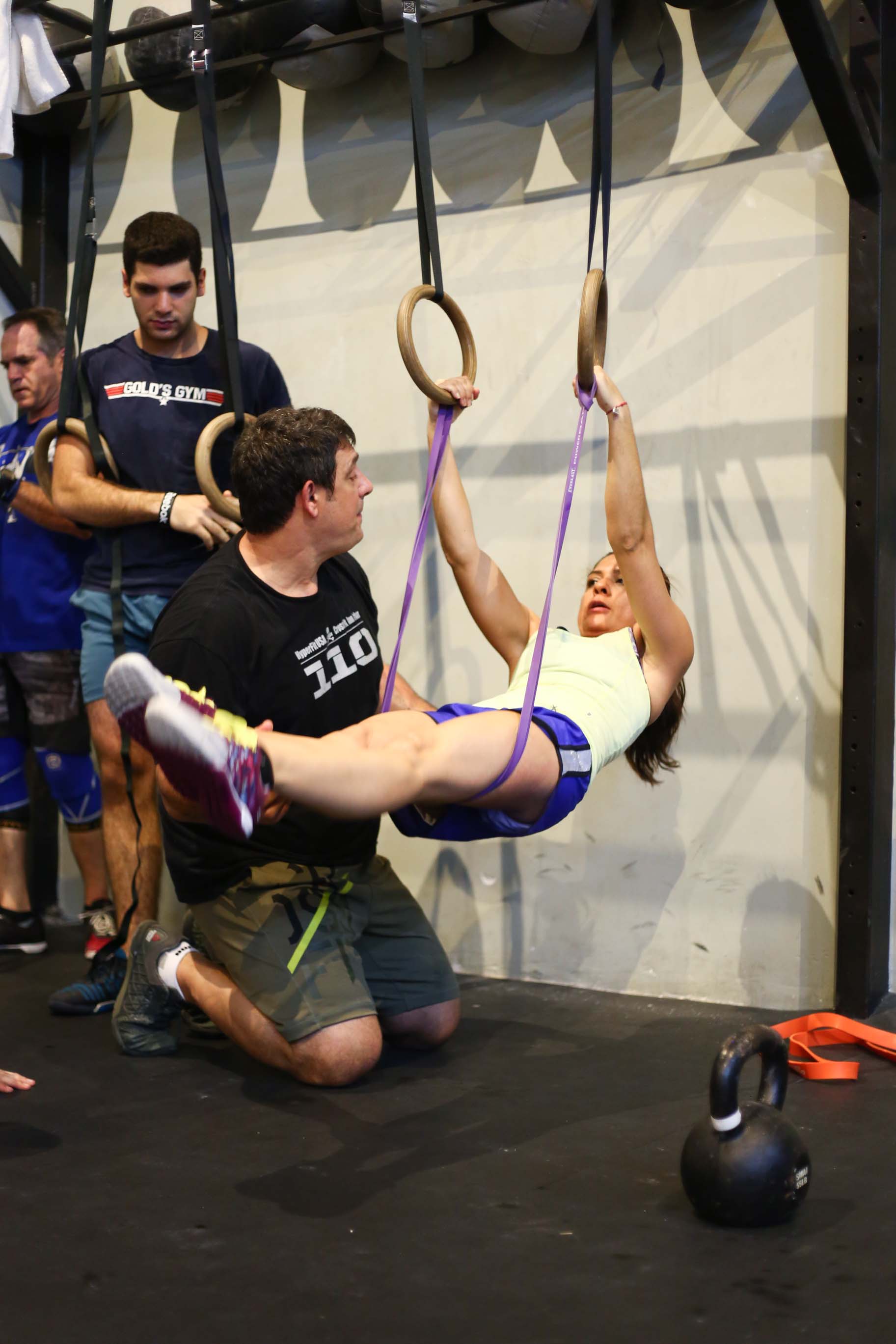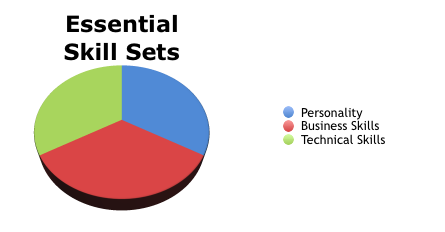Written by Doug Chapman
Training is an art.
It takes dedication, patience, understanding, and the desire to inspire others to be better than they already are. From initial contact to continuous growth and skill sets, you as a trainer have the ability to change another person’s life for the better.
Personal training is more than the physical; it is the beginning to changing the way another person looks at life’s challenges, teaching how to set personal goals, and teaching how to find the inner voice that will continuously drive a client to achieve.
The skills sets a trainer needs to be financially successful are the same skills that will improve their clients’ quality of life. The more you grow in each of the following areas, the more you will positively impact the lives of those that come to you for guidance.
Personality
People buy inspiration. Note all of the self-help books, videos, and seminars that people pay for in hopes of recreating their life. As a trainer, you are the embodiment of those hopes and dreams. When that woman in her mid-30s with the extra weight of life and two children walks through those gym doors for the first time or reaches out to you via phone or email, she is reaching in hopes of a better life. How you respond can make or break her dreams and your business.
First impressions take only moments to set and weeks to change. Goman, writer of leadership and professional success, found that it takes 7 seconds to make a first impression.
“The moment that stranger sees you, his or her brain makes a thousand computations: Are you someone to approach or to avoid? Are you friend or foe? Do you have status and authority? Are you trustworthy, competent, likeable, confident?” You need to exude all of these positive traits in just moments if you are to gain a stranger’s trust.”

How to gain someone’s trust in only 7 seconds
First, you need to understand that nonverbal cues are four times more influential in shaping someone’s view of you than what you actually say.
Forbes magazine listed the 7 nonverbal ways to make a positive first impression:
1. Adjust your attitude. People pick up your attitude instantly. Before you turn to greet someone or make a presentation, think about the situation and make a conscious choice about the attitude you want to embody. What is it that you wish to convey?
2. Straighten your posture. Status and power are nonverbally conveyed by height and space. Standing tall, pulling your shoulders back, and holding your head straight are all signals of confidence and competence.
3. Smile. A smile is an invitation, a sign of welcome. It says, “I’m friendly and approachable.”
4. Make eye contact. Looking at someone’s eyes transmits energy and indicates interest and openness. (To improve your eye contact, make a practice of noticing the eye color of everyone you meet.)
5. Raise your eyebrows. Open your eyes slightly more than normal to simulate the “eyebrow flash” that is the universal signal of recognition and acknowledgement.
6. Shake hands. This is the quickest way to establish rapport. It’s also the most effective. Research shows it takes an average of three hours of continuous interaction to develop the same level of rapport that you can get with a single handshake.
7. Lean in slightly. Leaning forward shows you’re engaged and interested, but be respectful of the other person’s space. That means, in most business situations, staying about 2 feet away.
You’ve got just 7 seconds – but if you handle it well, 7 seconds are all you need!
Once you’ve obtained the client, use these three basic personality drivers in guiding his or her success:
- People need to feel heard and understood. Whether it is the first day or eight months in, and whether she tells you how sore she is from last week or how work and her home life have been bringing her down, validate what she is going through and then use her struggles as motivation and encouragement for how hard she has worked and how her determination to get stronger transpires in all aspects of her life.
- Be POSITIVE! Every time a client comes in to work with you, you are the poster child for positive energy, positive self-talk, and positive motivation.
- Continuously encourage! Barring extenuating circumstances (medical, surgery, illness, etc.), if the person in front of you has “let themself go” in the past, there is a strong likelihood that they will let it happen again. If they disappear for a few days or a week, give them a call. Let them know you care about their success and encourage them to finish what they started and to simply not give up.
Business Skills
“A winner is someone who recognizes his God-given talents, works his tail off to develop them into skills, and uses these skills to accomplish his goals.” -Larry Bryd.
There are three essential business skills to master in order to grow any business.
- Stay in contact with your clients/customers. In the 21st century, nearly everyone has and uses multiple means of communication. The more avenues you utilize, the better. Whether it be email to send out newsletters, text messages to advertise new promotions and updates, or simply a phone to call customers, solid communication between you and your client base is vital.
- Advertise. Facebook, Instagram, Twitter, and blogs are all ways to promote your business and gain a following for what you do and what you stand for.
- Specifically, as a gym owner, your success is dependent upon the quality and competency of the trainers that represent you. Just as it is the trainer’s responsibility to continuously look for ways to improve, as a gym owner, it is yours to encourage, make way, and be an integral part in the staff development of your gym.
Technical Skills
The most obvious skill that any trainer must have is the technical proficiency of knowing and understanding bodily movements: the dynamics of lifting heavy weight, the metabolic conditioning of humans and how it accompanies one’s fitness level, and the ability to break down, simplify, modify, cue, and correct movement in the novice and the professional athlete alike.
Form and technique must be first and foremost.
Follow and always re-emphasize these key components in any lift:
- Midline stabilization/neutral spine
- Posterior chain engagement
- Range of motion
- Shoulder engagement (shoulder girdle)
- Balance with yourself and the external object. You must be balanced – both you and the object you are lifting.
Whether it is the first time a person is attempting a push-press, or if he/she has been competing in the professional circuit, the trainer must have enough attention to detail to be able to demonstrate and cue each step of the progression leading to the complete lift.
Class organization is essential for effective coaching.
In order to effectively coach one or multiple athletes, the trainer must be able to see all of his/her movements from various angles and degrees. An easy way to do this with a large number of people is by organizing the athletes in the following manner:
Align the participants in both rows and columns. This is effective in three ways:
- It enables a trainer/coach to look at the group as a whole to easily spot the athlete that is moving out of sync with the set standard.
- It allows the coach to move through the individuals with ease, permitting him or her to see and correct each athlete’s movement pattern.
- It gives way for clear and set working spaces to avoid unintentional collision and injury.
Most importantly, be limitless in your pursuit of knowledge and excellence. When you do this in your own life, you will attract a clientele that does the same.
–Bruce Lee
Related Articles
Lose Your Focus, Lose Your Edge
Doug Chapman is the owner of HyperFit USA, home of CrossFit Ann Arbor. CrossFit Ann Arbor is a ten year affiliate and one of the first in the world. Doug leads classes, training camps and online programming. He has coached athletes to nearly 30 appearances at the CrossFit Games including individuals, masters and several teams producing 5 podium finishers. Doug’s interests are in philosophy, history and physics.











































